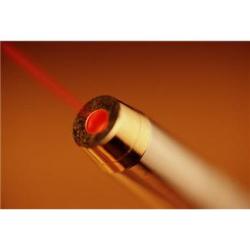Source Institutions
Source Institutions
Add to list Go to activity
Activity link broken? See if it's at the internet archive

In this experiment, learners construct an equilateral triangle using graph paper, a pencil, protractor and ruler. They also make a "laser triangle" using a laser pointer and front-silvered mirrors. Learners can use the geometric properties of an equilateral triangle combined with their understanding of the Law of Reflection to decide how to place the mirrors at each vertex so that the "laser triangle" fits their equilateral triangle. Learners also read about how Apollo astronauts helped scientists measure the distance to the Moon and the rate at which it's moving away from Earth by setting up special reflectors and lasers on the lunar surface.
- Under 5 minutes
- 45 to 60 minutes
- $1 - $5 per group of students
- Ages 14 - 18
- Activity, Lesson/Lesson Plan
- English
Quick Guide
Materials List (per group of students)
- Laser pointer
- 1/2 inch binder clip
- 8.5 x 11 inch graph paper
- protractor
- ruler
- 3 front silvered mirrors
- 3 CD jewel boxes to hold the mirrors in a vertical position (optional)
Subjects
-
Earth and Space Science
-
Astronomy
- Probes, Satellites and Spacecraft
-
Solar System
- The Moon
-
Astronomy
-
Physical Sciences
-
Light and Optics
- Lasers
- Lenses and Mirrors
- Reflection and Refraction
-
Light and Optics
-
Engineering and Technology
-
Engineering
- Aerospace Engineering
- Technology
-
Engineering
-
Mathematics
- Geometry
-
Measurement
- Polygons
-
The Nature of Science
-
The Scientific Process
- Conducting Investigations
-
The Scientific Process
Audience
To use this activity, learners need to:
- see
- read
- touch
Learning styles supported:
- Involves teamwork and communication skills
- Involves hands-on or lab activities
Other
Components that are part of this resource:
Includes alignment to state and/or national standards:
This resource is part of:
Access Rights:
- Free access
By:
- The University of Texas McDonald Observatory
Rights:
- All rights reserved, The University of Texas McDonald Observatory, 2011
